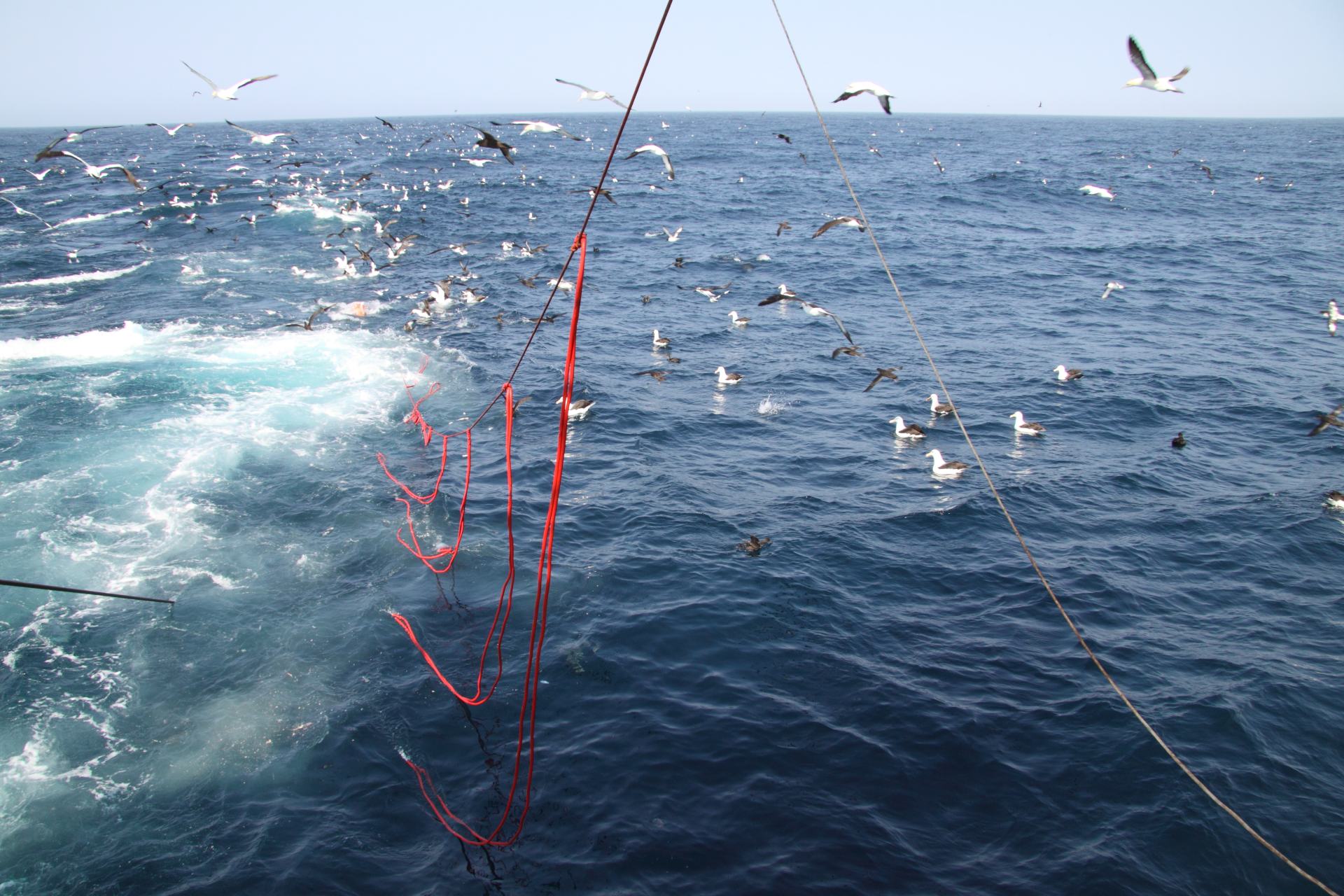Number of seabirds killed in Namibian waters reduced by 98%
The Namibian Albatross Task Force is celebrating a major conservation success story after a decade of work with the country's fishing industry and fisheries managers: seabird deaths in the Namibian demersal longline fishery have been reduced by 98%.
A new paper published in the journal Biological Conservation revealed the statistic, which has been achieved thanks to effective government regulation and dedicated grassroots engagement with the industry.

Albatrosses and other seabirds have traditionally fallen foul of the longline fishing industry in huge numbers (Namibian ATF).
Bycatch – the capture of non-target species in fisheries – remains one of the biggest threats to seabirds, especially albatrosses. The RSPB and BirdLife International established the 'Albatross Task Force' (ATF) in South America and southern Africa to engage directly with the fishing industry and demonstrate the simple measures that can prevent birds being caught on longline fishing hooks or killed by collisions with the thick steel cables that haul trawl nets through the water.
In Namibia, one of the first jobs of the Task Force was to establish the scale of seabird bycatch in the riskiest fisheries. The results were rather shocking. Namibia's hake trawl and longline fisheries were found to be among the world's deadliest for seabirds: estimated at 30,000 birds killed each year, including threatened species like Atlantic Yellow-nosed Albatross and White-chinned Petrel.
Since establishing the scale of the issue, the Namibian ATF has worked with the fishing industry on-board to demonstrate so called 'mitigation measures' like bird-scaring lines – simple 'scarecrow' type rope lines paid out behind the vessel that scare birds away from baited hooks or dangerous trawl cables. After many thousands of hours at sea and in ports building support for these measures and the importance of protecting seabirds, in 2015 the team were successful in advocating for fishery regulations requiring the use of mitigation measures by law.
These new laws meant that bird-scaring lines were widely adopted across the fleets, and the new study demonstrates just how effective the potent combination of grassroots engagement and solid regulations has been. The next step is to make sure that the approaches developed by the ATF are hard-wired into the long-term management of the fishery. Albatrosses are very long-lived birds, so conservation efforts need to be sustained over time.
The Namibian team is the second of five ATF teams across the world to have achieved a more than 90% seabird bycatch reduction, hot on the heels of similar success in South Africa in 2014, where albatross bycatch was reduced by 95% in the hake trawl fishery. In the next two years the aim is to demonstrate similar reductions in Argentina and Chile, and to have made a major contribution to the improved conservation status of seabirds.

